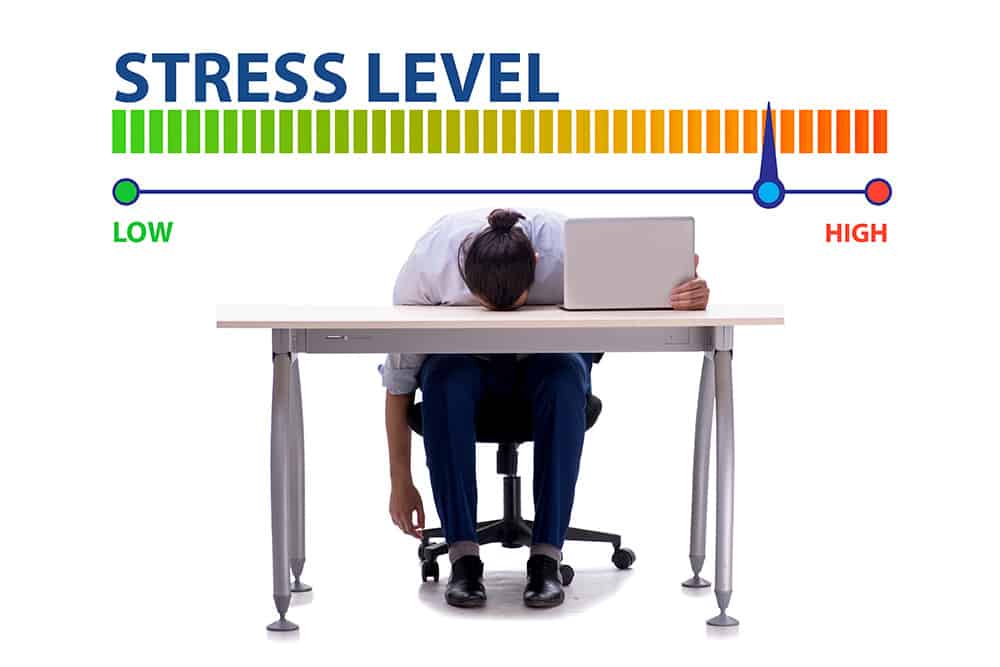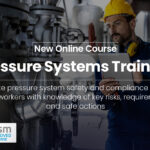
Work-related stress is one of the major causes of employee illness and long-term absence in the UK. Taking steps to reduce stress in the workplace will protect the mental health of your staff and make sure you meet your lawful obligations.
Conducting a stress risk assessment will enable you to identify and control the causes of stress in the workplace. Keep reading to find out what you need to know about reducing stress at work.
What is a Workplace Stress Risk Assessment?
A risk assessment is a step-by-step process that aims to identify and evaluate the level of risk in the workplace. The information gained from conducting a risk assessment is then used to develop control measures to eliminate or mitigate risks.
A workplace stress risk assessment follows the same general principles and steps as any other risk assessment. However, unlike a normal risk assessment that is focused on physical risks, a workplace stress risk assessment can be more difficult to perform. This is because the causes of stress in the workplace are not always apparent or easy to identify. Anyone conducting a stress risk assessment must be aware of the specific challenges involved.
Why Stress Risk Assessments Are Important
Approximately 914,000 UK workers suffered from work-related stress during the 2021-2022 period, according to recent survey results gathered by the HSE. These figures showed that 17 million working days were lost as a result of stress at work. This works out to an average of just over 18 working days lost for every instance of work-related stress. The HSE also estimated that over half of all work-related illnesses were caused by undue stress in the workplace.
It’s clear that by helping your employees to avoid feeling stressed at work, you can create a happier and more productive workforce. Reducing stress at work can improve morale, reduce high rates of absenteeism and decrease employee turnover.
How to Conduct a Workplace Stress Risk Assessment
There are five steps involved in conducting a risk assessment. Assessors must:
- Identify any risks in the workplace
- Identify who may be harmed and how they may be harmed
- Develop and implement measures to eliminate or control the risk
- Record all findings and measures taken (This is a legal requirement if the business has more than five employees)
- Periodically review the risk assessment and update it if necessary
By focusing on the six Management Standards when following the above steps, assessors can isolate the causes of stress in the workplace and develop ways to eliminate or control these risks.
What to Consider During a Workplace Stress Risk Assessment
The HSE advises that six factors contribute to employees feeling stressed at work. These factors are referred to as the Management Standards. When conducting a stress risk assessment, you need to consider how the following factors are impacting the stress levels of employees:
- Demands – Unrealistic demands can leave employees feeling pressured and unable to cope with their workloads. Conversely, not having enough work can also result in employees feeling stressed
- Control – Employees may report that they feel they have no control over decision-making and how their work duties are performed
- Support – There is not enough support for employees in the workplace. This can include a lack of information about the direction of the company, a lack of encouragement for employees, insufficient training, and a lack of resources being made available
- Relationships – Employees may have difficulty managing relationships at work. Work relationships can be strained by issues such as bullying, ostracization, or discrimination
- Role – Employees may not feel as though they fully understand the nature of their role and their responsibilities
- Change – Not being involved in major changes to work processes or the organisational structure of the business can result in heightened levels of stress for employees
How to Recognise the Signs of Work-Related Stress
Work-related stress has been described as an ‘adverse reaction people have to excessive pressures or other types of demand placed on them at work’ by the Health and Safety Executive (HSE).

Signs of stress in the workplace can include:
- Increased absenteeism
- Increased rates of lateness
- Higher rates of employee turnover
- Decreased productivity and performance
- An increase in work-related complaints
- Increased arguments among staff
- Staff appearing to be nervous, unmotivated, or withdrawn
- Staff being overly emotional in their reactions
Using a Workplace Stress Risk Assessment Questionnaire
Some people may find it beneficial to make use of a workplace stress risk assessment questionnaire when conducting their assessment. This can include questions such as:
- Are employees satisfied with their workloads?
- Are there sufficient breaks being offered?
- Is there enough training provided?
- Do staff feel as though they have control over how they perform their duties?
- Do employees require more support in their role?
- Are staff experiencing any issues with co-workers?
- Is it clear what is expected of them?
- Does the company provide enough information and support during organisational changes?
Who Can Carry Out Stress Risk Assessments?
The responsibility to carry out a risk assessment lies with the employer. An employer is directly responsible ‘for the effective planning, organisation, control, monitoring and review of the preventive and protective measures’ as per the Management of Health and Safety at Work Regulations 1999.
While an employer can delegate the task of carrying out a risk assessment to a competent employee or third party, the legal responsibility remains with the employer.
Where to Find Further Risk Assessment Training
Failing to perform risk assessments that are deemed ‘suitable and sufficient’ can result in breaches of health and safety legislation. If you’re found guilty of breaching health and safety regulations, you could face criminal charges. Penalties can include unlimited fines or prison terms.
Signing up for the Risk Assessment Training from Human Focus will give you and your team the skills and knowledge to properly conduct a stress risk assessment. Our Risk Assessment Training provides participants with a firm understanding of the risks associated with work-related stress and how they can identify and control these risks.





























































































































































































































































































































































































































































































































































































































































































































































